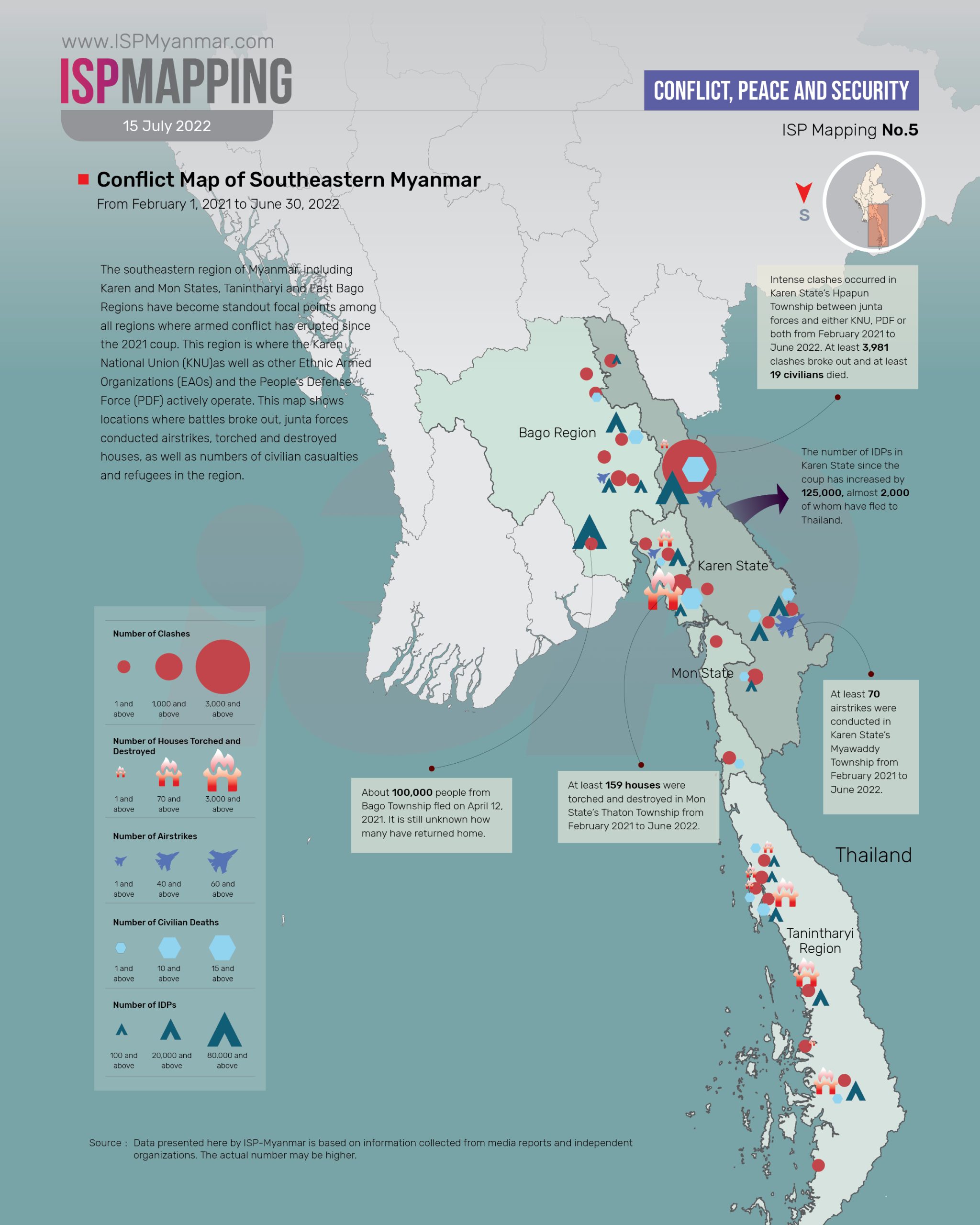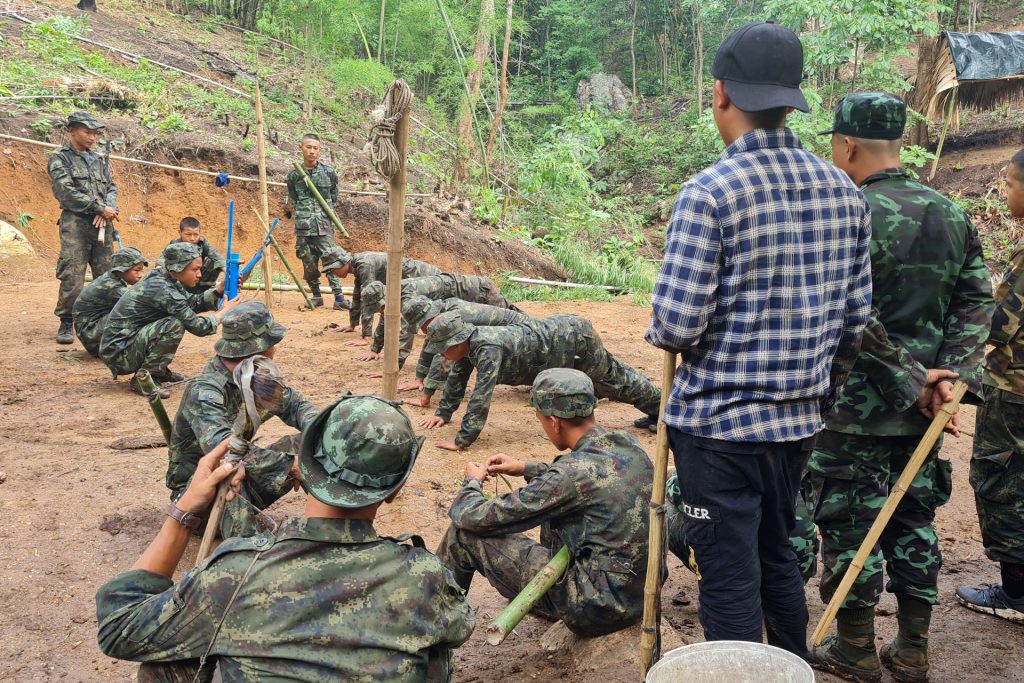ISP Mapping No. 5
(This article is a translation of the Burmese language version that ISP-Myanmar posted on its Facebook page on July 15, 2022.)

Of all armed ethnic groups, the Karen National Union/Karen National Liberation Army (KNU/KNLA) has clashed with junta forces most often since the coup. With the increasing number of clashes in the southeast of Myanmar, the clashes have become intensified, and the conflict has become more widespread in eastern Bago Region, Karen and Mon States and Tanintharyi Region. This conflict map by ISP-Myanmar shows locations where battles broke out, locations of airstrikes by junta forces, where houses were torched and destroyed, as well as the numbers of civilian deaths and refugees in the region.
∎ Most Clashes and Airstrikes
At least 4,710 clashes broke out between junta forces and Karen armed organizations from February 1, 2021 to June 30, 2022. The military also conducted at least 124 airstrikes during that period. Among clashes in Karen State, the Arakan National Council/ Arakan Army (ANC/AA) cooperated with the KNU/KNLA in some battles against junta forces while in other clashes the Karen National Defense Organization (KNDO), the Democratic Karen Buddhist Army (DKBA) and People’s Defense Force under the command of the National Unity Government (NUG) fought the junta forces separately.
∎ Over 300,000 Civilians Flee Homes
Over 323,656 civilians from Myanmar’s southeast region fled their homes from February 1, 2021 to June 20, 2022 due to the escalation of armed conflict since the coup. About 321,670 of the 323,656 IDPs are from Karen State, Bago and Tanintharyi Regions. 1,980 people have crossed the border and are now sheltering in Thailand. Prior to the coup, there were already IDPs in Karen State who had fled their homes due to armed conflict and refugees who had fled across the border.
∎ Why does this matter?
By looking at the number of civilian fatalities and injuries, the manner in which they were killed and wounded, and the number of people displaced by fighting involving regime forces and EAOs, or amongst EAOs themselves, it is possible to examine whether or not armed forces have committed human rights violations from the perspective of transitional justice. In addition, by studying the post-coup situation, further research can be conducted to examine human security matters.
∎ Other Relevant Readings:
On-the-ground reports from ethnic news organizations and other independent media groups provide regular updates about conflict situations, their impact, and the collateral damage in the aftermath of the military coup. These include reports of renewed fighting in ethnic areas, civilian fatalities, and rising refugee and IDP issues on the ground. In addition, records and reports by United Nations organizations such as the United Nations Office for the Coordination of Humanitarian Affairs (UNOCHA), and other independent local and foreign organizations also provide information about the ongoing conflict situation in Myanmar.

